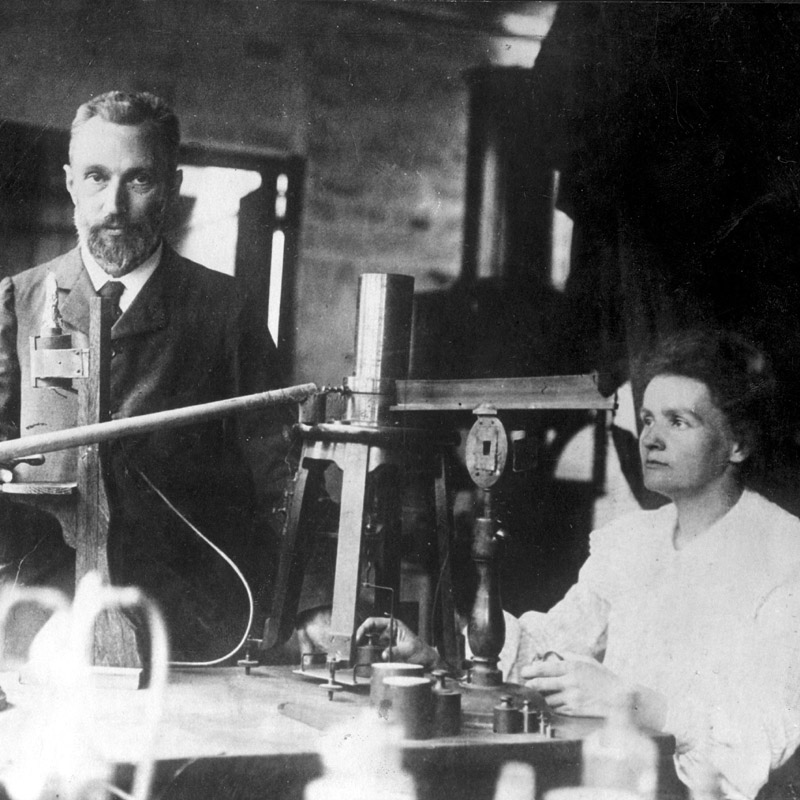Polonium
84
Po
Ryhmä
16
Jakso
6
Lohko
p
Protonia
Elektronit
Neutronia
84
84
126
Yleiset ominaisuudet
Järjestysluku
84
Atomipaino
[210]
Massaluku
210
Luokka
Puolimetallit
Väri
Hopea
Radioaktiivisuus
Kyllä
Named after Poland, native country of Madam Curie
Kiderakenne
Yksinkertainen kuutiollinen
Historia
Polonium was discovered by Marie and Pierre Curie in 1898 in Paris.
This element was the first one discovered by the Curies while they were investigating the cause of pitchblende radioactivity.
The dangers of working with radioactive elements were not known when the Curies made their discoveries.
This element was the first one discovered by the Curies while they were investigating the cause of pitchblende radioactivity.
The dangers of working with radioactive elements were not known when the Curies made their discoveries.
Elektroneja elektronikuorilla
2, 8, 18, 32, 18, 6
Orbitaalirakenne
[Xe] 4f14 5d10 6s2 6p4
Polonium is obtained by irradiating bismuth with high-energy neutrons or protons
Fyysiset ominaisuudet
Olomuoto
Kiinteä
Tiheys
9,196 g/cm3
Sulamispiste
527,15 K | 254 °C | 489,2 °F
Kiehumispiste
1235,15 K | 962 °C | 1763,6 °F
Sulamislämpö
13 kJ/mol
Höyrystymislämpö
100 kJ/mol
Ominaislämpökapasiteetti
- J/g·K
Esiintyvyys maankuoressa
Ei saatavilla
Esiintyvyys maailmankaikkeudessa
Ei saatavilla

CAS-numero
7440-08-6
PubChem CID-numero
Ei saatavilla
Atomiominaisuudet
Atomisäde
168 pm
Kovalenttisäde
140 pm
Elektronegatiivisuus
2,00 (Paulingin asteikko)
Ionisoitumispotentiaali
8,417 eV
Moolitilavuus
22,23 cm3/mol
Lämmönjohtavuus
0,2 W/cm·K
Hapetusluvut
-2, 2, 4, 6
Käyttö
Polonium is used to eliminate static electricity produced during processes such as rolling paper, wire and sheet metal.
Polonium can be mixed or alloyed with beryllium to provide a source of neutrons.
It is also used in anti-static brushes to eliminate dust on photographic film.
Polonium can be mixed or alloyed with beryllium to provide a source of neutrons.
It is also used in anti-static brushes to eliminate dust on photographic film.
Polonium is highly dangerous and radioactive
Isotooppi
Vakaat isotoopit
-Epävakaat isotoopit
188Po, 189Po, 190Po, 191Po, 192Po, 193Po, 194Po, 195Po, 196Po, 197Po, 198Po, 199Po, 200Po, 201Po, 202Po, 203Po, 204Po, 205Po, 206Po, 207Po, 208Po, 209Po, 210Po, 211Po, 212Po, 213Po, 214Po, 215Po, 216Po, 217Po, 218Po, 219Po, 220Po